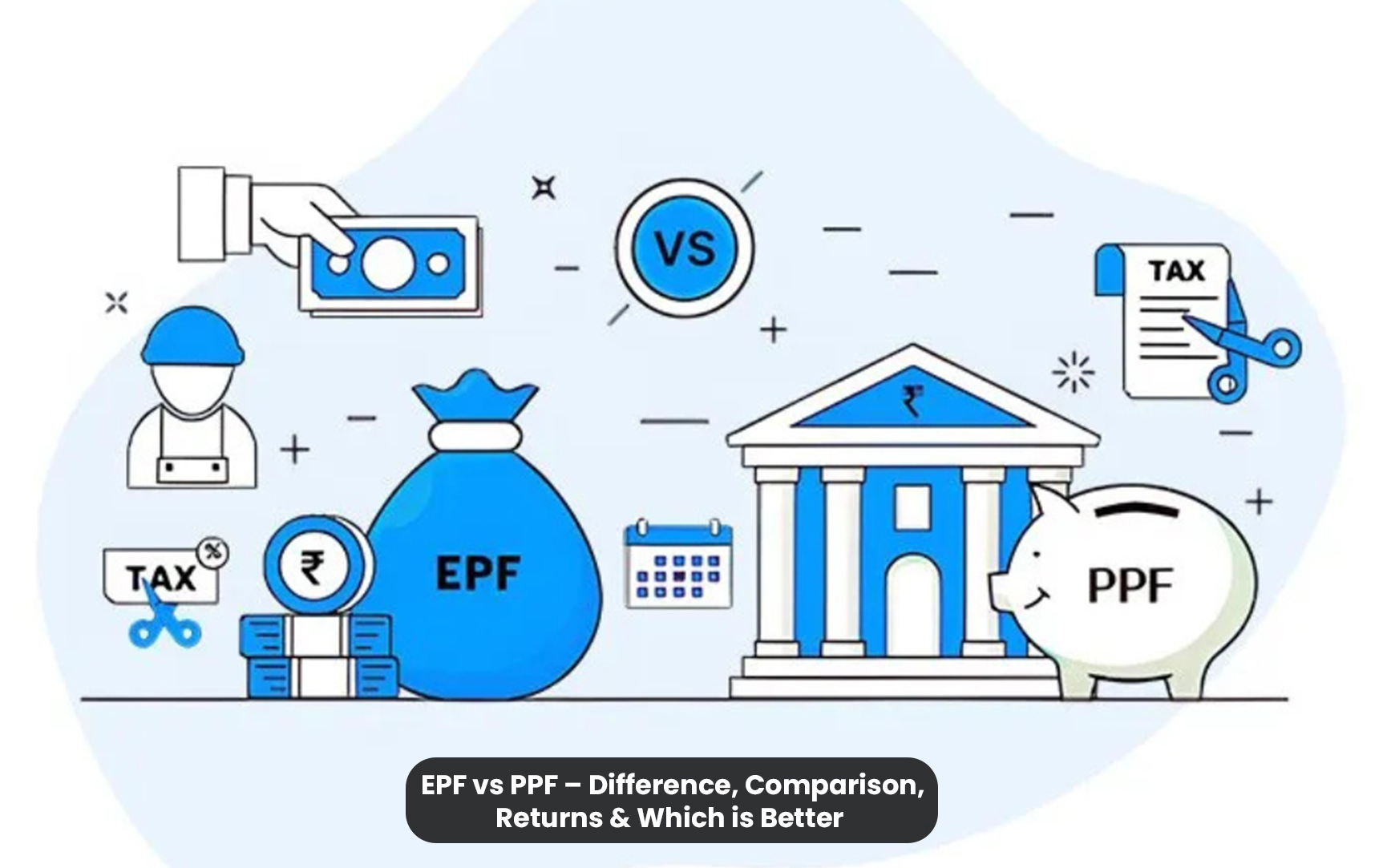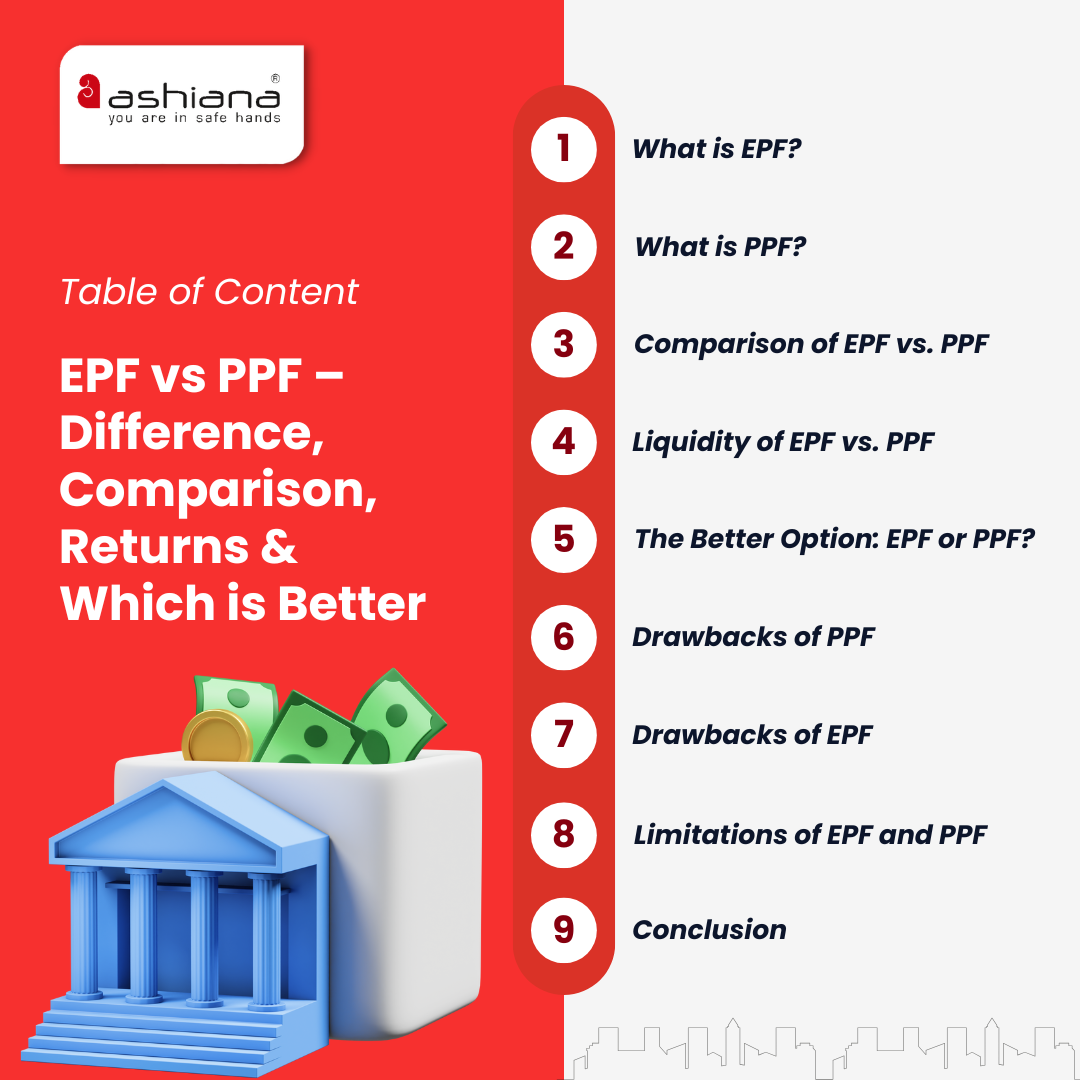

| Feature | EPF | PPF |
| Eligibility | Salaried employees working in EPFO-registered organizations | All Indian residents, including minors (through guardianship) |
| Employer Contribution | Yes, along with employee contribution | No employer contribution |
| Interest Rate | Determined annually by EPFO (currently around 8.15%) | Set quarterly by the government (currently around 7.1%) |
| Maturity | Upon retirement (58 years) or job change | 15 years, extendable in 5-year blocks |
| Tax Benefits | Tax-free on interest and maturity if 5 years of service completed | Fully tax-free (interest and maturity) |
| Investment Limit | Based on salary (12% of basic and DA) | ₹500–₹1.5 lakh annually |
| Liquidity | Partial withdrawals allowed for specific needs | Partial withdrawals after 7 years, loan facility from 3rd to 6th year |
From the comparison, it’s evident that EPF and VPF generally outperform PPF in terms of return on investment, employer contribution, and liquidity. However, as EPF and VPF are not available to self-employed individuals and those in the unorganized sector, PPF stands out as a more accessible option.
An employee can have both an EPF (Employees’ Provident Fund) account and a PPF (Public Provident Fund) account without any restrictions. Building a substantial corpus for retirement is crucial, especially in the era of nuclear families where children often move away for work, leaving parents to manage their lives independently. Planning ensures financial stability and security during retirement.
According to the rules established by the Government of India, an individual is allowed to open only one PPF account in their name. This is strictly enforced to prevent the misuse of tax benefits and to ensure systematic savings.
Ashiana, Ashiana Housing build homes. Homes surrounded by vast green spaces and fresh breeze. Homes cocooned in secured gated complexes. Homes where futures are forged and there are opportunities to grow. And Homes in environments brimming with healthy activity, trust and respect. At heart, we build communities with care.
Other posts by Ashiana
Join 1000+ of fellow readers. Get expert real estate knowledge straight to your inbox absolutely free. Just enter your email address below.